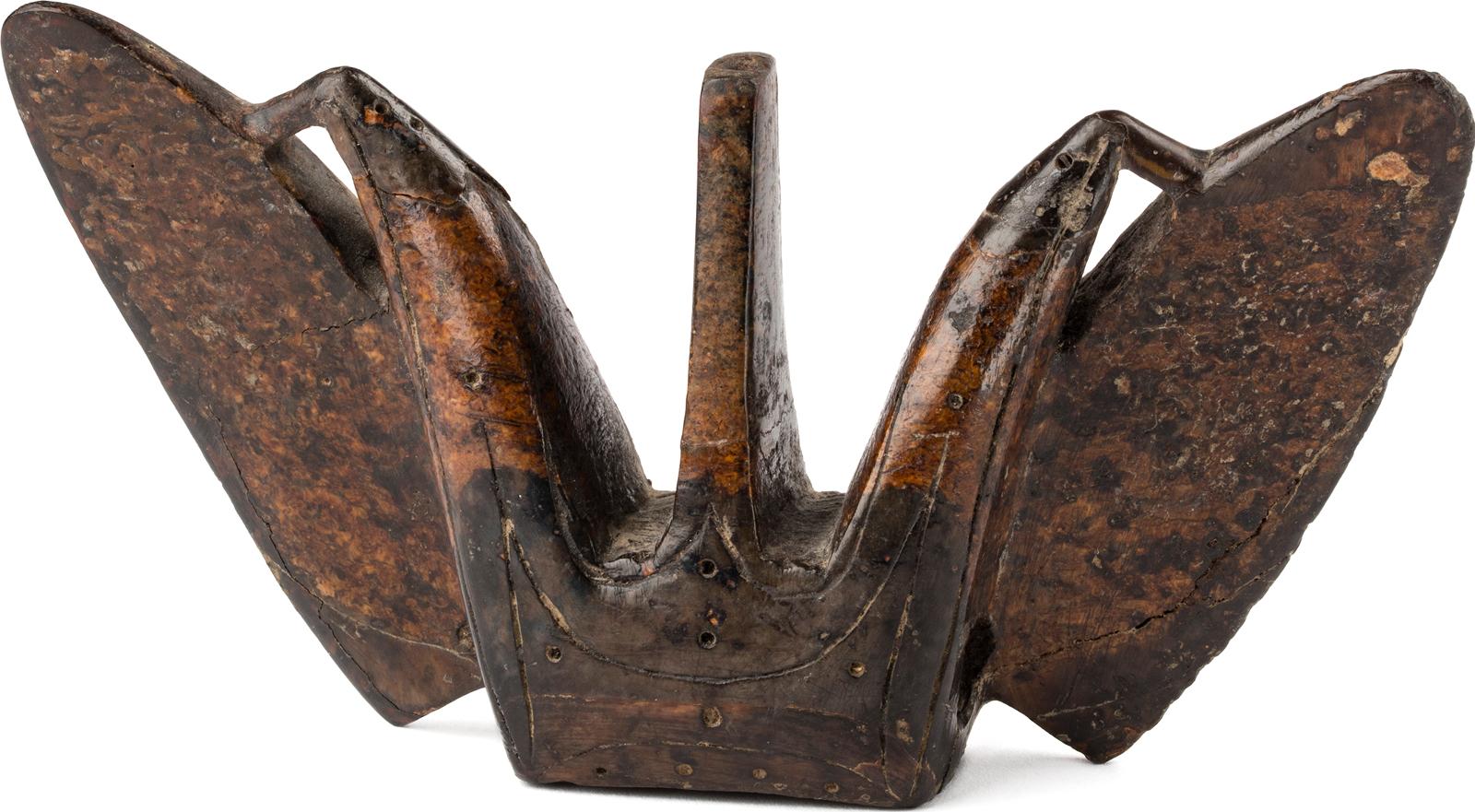
Harpoon Counter Weight (Winged Object)
3.12 cms x 6 cms (1.23 ins x 2.36 ins)
C. A.D 600-800
Lot offered for sale by Waddington's, Toronto at the auction event "First Arts: Inuit & First Nations Art" held on Tue, May 28, 2019.
Lot 74
Lot 74
Estimate: CAD $2,500 - $3,500
Realised: CAD $3,840
Realised: CAD $3,840
Lot description - from the online catalogue*
Provenance:
Bill Johnstone Collection, U.K.; Alaska Shop, NYC
Notes:
Harpoon counterweights (or "winged objects" as they are often called) counteracted the weight of the harpoon's heavy ivory head, foreshaft and socket piece. Attached to the butt end of the harpoon, they also acted as stabilizers. Counterweights were used from Okvik times right through to the end of the Punuk Period and their styles changed considerably over time. They are remarkably elegant objects, with both their form and decoration highly suggestive (and symbolic) of their important function.
William Fitzhugh synthesizes an evolution in style and meaning for the "winged object" (see reference pp. 182-185). We would suggest that our example fits the style for the Early Punuk Period, just past OBS III. It's a transitional design, relying far less on engraved pattern for its symbolic meaning and far more on sculptural form. While most scholars (including Fitzhugh) suggest that all animal references disappeared with the new shape and lack of engraving, we see clear naturalistic bird form - in fact perhaps even a double-headed bird form - in the sculpture itself. This "winged object" is perhaps more literal and less symbolic, but it is unarguably very elegant. The Middle Punuk design of counterweight is more radically stylized, and the Late Punuk "turreted objects" have a completely different look.
References: for illustrations of similar works see William Fitzhugh et al, Gifts from the Ancestors: Ancient Ivories of Bering Strait (Princeton Univ. Art Museum/Yale Univ. Press, 2009), pp. 147, 184-185. See also Henry Collins et al, The Far North: 2000 Years of American Eskimo and Indian Art (National Gallery, Washington, 1973) p. 19.
First Arts: Inuit & First Nations Art Auction www.firstarts.ca
Bill Johnstone Collection, U.K.; Alaska Shop, NYC
Notes:
Harpoon counterweights (or "winged objects" as they are often called) counteracted the weight of the harpoon's heavy ivory head, foreshaft and socket piece. Attached to the butt end of the harpoon, they also acted as stabilizers. Counterweights were used from Okvik times right through to the end of the Punuk Period and their styles changed considerably over time. They are remarkably elegant objects, with both their form and decoration highly suggestive (and symbolic) of their important function.
William Fitzhugh synthesizes an evolution in style and meaning for the "winged object" (see reference pp. 182-185). We would suggest that our example fits the style for the Early Punuk Period, just past OBS III. It's a transitional design, relying far less on engraved pattern for its symbolic meaning and far more on sculptural form. While most scholars (including Fitzhugh) suggest that all animal references disappeared with the new shape and lack of engraving, we see clear naturalistic bird form - in fact perhaps even a double-headed bird form - in the sculpture itself. This "winged object" is perhaps more literal and less symbolic, but it is unarguably very elegant. The Middle Punuk design of counterweight is more radically stylized, and the Late Punuk "turreted objects" have a completely different look.
References: for illustrations of similar works see William Fitzhugh et al, Gifts from the Ancestors: Ancient Ivories of Bering Strait (Princeton Univ. Art Museum/Yale Univ. Press, 2009), pp. 147, 184-185. See also Henry Collins et al, The Far North: 2000 Years of American Eskimo and Indian Art (National Gallery, Washington, 1973) p. 19.
First Arts: Inuit & First Nations Art Auction www.firstarts.ca
Most realised prices include the Buyer's Premium of 18-25%, but not the HST/GST Tax.
(*) Text and/or Image might be subject matter of Copyright. Check with Waddington's auction house for permission to use.
(*) Text and/or Image might be subject matter of Copyright. Check with Waddington's auction house for permission to use.